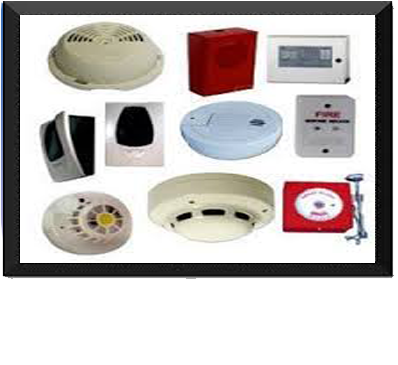Fire Fighting System
Saving lives is the primary consideration when fire breaks down in buildings, and therefore people inside the building need to be informed so they canevacuatethe building quickly as possible before the fire spreads out. And therefore should be the means of notifying system inside the buildings.The primary task of any warning system is to record and the discovery of fire and transform it into an electrical signal that operates the alarm, then the fire alarm
system sends electrical impulses to control panel which in turn creates immediately light signal ; indicates where the sound is coming from, and it also create a sound signal to be heard by the responsible person . the master control panel for the existence of the fire. Must be buildings must be equipped warnings systems and basics firefighting facilities to protect buildings and their occupants from the dangers of fire, by providing early warnings in order to evacuate the building , and firefighting primarily by trained personnel or by Automatic equipment and then call the Civil Defense team if necessary.
Fire alarm systems and equipment are divided into thefollowing main types:
Manual fire alarm systems
Automatic fire alarm systems
First: Manual fire alarm systems
The break glass call point is a device to enable personnel to raise the alarm in the event of a fire, by simply breaking a frangible element and thus activating the alarm system. The following notes give guidance for the correct siting and positioning of break glass call points:Break glass call points should be located on exit routes and in particular on the floor landings of staircases and at all exits to the open air.
Break glass call points should be located so that no person need travel more than 45m from any position within the premises in order to give an alarm (30m if layout is unknown).
Generally, call points should be fixed at a height of 1.4m above the floor, at easily accessible, well-illuminated and conspicuous positions free from obstruction.
Fire Detection and Alarm Systems
The method of operation of all call points in an installation should be identical unless there is a special reason for differentiation.
Manual and automatic devices may be installed on the same system although it may be advisable to install the manual call points on separate zones for speed of identification.
Break glass call points should be located so that no person need travel more than 45m from any position within the premises in order to give an alarm (30m if layout is unknown).
Generally, call points should be fixed at a height of 1.4m above the floor, at easily accessible, well-illuminated and conspicuous positions free from obstruction.
The method of operation of all call points in an installation should be identical unless there is a special reason for differentiation.
Manual and automatic devices may be installed on the same system although it may be advisable to install the manual call points on separate zones for speed of identification.
Second:Automatic Fire Detection and Alarm Systems
Automatic fire detection and alarm systems are designed to warn building occupants of a fire situation, they do not generally intervene in the fire growth process except where interfaced with a fire suppression or other fire control system.
These systems generally use smoke, heat or flame detectors to detect the outbreak of fire and to alert building occupants and the fire brigade. Manual call points which allow an occupant who discovers fire to raise the alarm may also be included in the system.. Single station residential smoke alarms, as installed in most homes, are the simplest system for detecting a fire and warning the building occupants.
The time between the outbreak of fire and the commencement of firefighting is the single most important factor in fire control and can be effectively reduced by having the system monitored directly by the fire brigade.
Fire alarm systems must be heard by the building occupants in all parts of the building. To achieve this,
Our Services
- Geographic Inforamtion Systems(GIS)
- Direction Navigation System
- Vehicles tracking system
- Fire Fighting System
- Computer Service
- Direction Training
they are often connected to occupant evacuation warning and intercommunication systems which sound a defined "beep - beep - beep" throughout the building when the detection system has been activated.
Sometimes these systems automatically close smoke and fire doors, operate flashing warning lights, stop air-conditioning systems or alert critical staff via personal pagers.
Today these systems extensively rely upon computer systems and are changing at the same rapid pace as is computer technology. Today's systems can be "intelligent" defining exactly where the fire is, determining if the smoke is from a fire threat or just burnt toast and advising the maintenance manager when the detector needs cleaning or other routine maintenance work is required.The parts that make up the automatic warning system are:
Detectors sensitive heads types
Sensitive Heads
Cooler heads
Illustrative visual indicating panels
Audible Warning Devices
calling the fire specialists
Wires and other connections for the system
view more
Sensitive Heads
Cooler heads
Illustrative visual indicating panels
Audible Warning Devices
calling the fire specialists
Wires and other connections for the system
view more
Latest Project
Using ArcGIS Runtime for Windows Mobile

We are trying to update attribute data of features and somehow the geometry gets also updated when we save the changes to the mobile cache and synchronize them back to the database.
Testimonials
“By using GIS to more efficiently bring information together, transportation planners are in a better position to review, analyze, and understand the problems they are addressing. This efficiency can save time and money, and can lead to improved decisionmaking. ”
Our Partners












